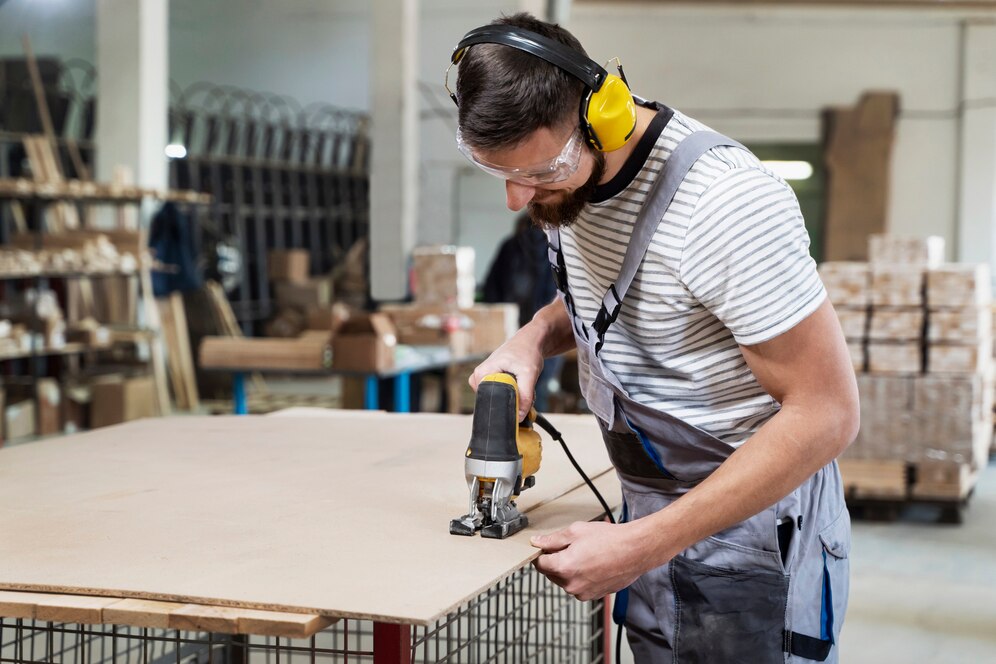Table of Contents
The Versatility of Plywood: From Furniture to Architecture
Plywood has long been recognized as a key material in various industries due to its incredible versatility. From crafting exquisite furniture to constructing awe-inspiring architectural structures, plywood has become an indispensable tool for artisans and builders alike. In this section, we delve deeper into the exceptional range of applications where plywood truly shines.
Plywood’s adaptability enables it to seamlessly fit into any project, whether it’s creating a cozy farmhouse-style dining table or erecting a towering skyscraper. With its ability to withstand immense pressure and resist warping, plywood provides a stable foundation for furniture, allowing designers to explore innovative shapes and designs without compromising on durability. Moreover, its lightweight nature makes transportation and installation a breeze, making it an ideal choice for residential and commercial projects alike.
In architecture, plywood serves as a trusted ally, enabling architects and engineers to push the boundaries of design. Its structural integrity, combined with its cost-effectiveness, makes plywood an attractive alternative to traditional building materials. From temporary installations to permanent structures, plywood has proven its mettle time and again, revolutionizing the industry with its versatility.
Aesthetics and Plywood: Embracing the Beauty of a Natural Material
Contrary to popular belief, plywood is not merely a utilitarian material; it possesses a captivating beauty that can enhance the visual appeal of any space. The layered composition of plywood accentuates its natural wood grain, adding a touch of warmth and authenticity to furniture and architectural elements. In this section, we explore how plywood’s aesthetic features have made it a favorite among designers and homeowners seeking a blend of functionality and elegance.
Plywood’s allure lies in its ability to effortlessly complement a wide range of interior styles. Whether it’s the rustic charm of farmhouse decor or the sleek modern lines of contemporary design, plywood adapts and enhances any ambiance. Its natural tones and textures exude a sense of timelessness, adding character to both residential and commercial spaces.
Designers have embraced plywood for its versatility in creating statement pieces that truly stand out. From sculptural chairs that redefine comfort to eye-catching accent walls that add depth, the aesthetic potential of plywood is boundless. Its ability to be stained, painted, or left in its natural state allows designers to explore an array of creative possibilities, breathing life into their vision.
Mastering the Craft: Techniques and Tips for Working with Plywood
Working with plywood requires finesse and an understanding of its unique properties. In this section, we delve into the craft of plywood and provide techniques and tips for achieving the best results.
-
Choosing the Right Plywood: Before starting any project, it’s crucial to select the appropriate type of plywood. Different grades and thicknesses of plywood are available, each suited for specific applications. Understanding the characteristics of different plywood grades, such as the number of veneer layers and the quality of the core, ensures that you choose the right plywood for your project.
-
Cutting and Shaping: Plywood can be easily cut and shaped using various tools such as circular saws, jigsaws, or routers. When cutting plywood, it’s important to use a sharp blade to prevent splintering. Additionally, taking proper safety precautions, such as wearing protective eyewear and gloves, is crucial to ensure a smooth and safe cutting process.
-
Joinery Techniques: Plywood can be joined together using a variety of techniques, including screws, nails, dowels, and adhesives. When using screws or nails, pre-drilling pilot holes and countersinking them will prevent the plywood from splitting. For a more seamless finish, consider using dowels or adhesives to create invisible joints.
-
Finishing Plywood: To enhance the appearance and durability of plywood, applying a finish is essential. Depending on the desired look, plywood can be stained, painted, or finished with clear varnish to showcase its natural beauty. Before applying any finish, it’s important to properly sand the plywood surface to achieve a smooth and even finish.
-
Caring for Plywood: Proper maintenance and care are essential to ensure the longevity of plywood. Avoid exposing plywood to excessive moisture or direct sunlight, as these can cause warping or discoloration. Regularly cleaning the surface with a damp cloth and avoiding harsh chemicals will help preserve the plywood’s appearance.
By mastering these techniques and following these tips, you can unlock the full potential of plywood and create stunning pieces that showcase both its versatility and beauty. Whether you’re a seasoned professional or a hobbyist, the craft of working with plywood offers endless possibilities for creativity and innovation.
Photo source: freepik.com

